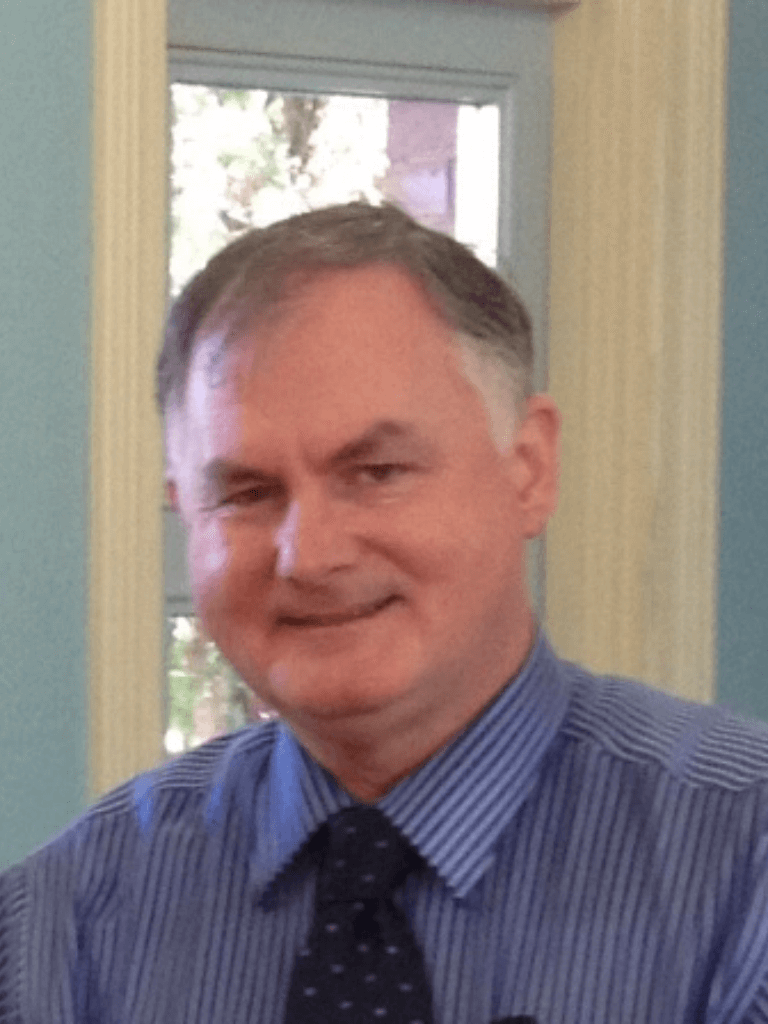On Purpose: Life-Giving Leadership

“Go placidly amid the noise and the haste, and remember what peace there may be in silence. As far as possible, without surrender, be on good terms with all persons.”
Max Ehrman (1927) Desiderata.
The start of a new year is often a good starting point for reflection, planning, goal setting, and for establishing the tone for the year ahead. Whether you are a leader continuing in their role in the new year or one commencing in the role for the first time, the almost 100 years of sage-like advice from Max Ehrman’s Desiderata is worth taking on board.
December and January are often thought of as festive months. Around the world, different religions and different cultures have an array of reasons to be festive. Typically they focus on light or joy or peace or goodwill to all. Around the world, in every major city or town, there will be fireworks to light up the night sky as the clock ticks to midnight and the new year begins. For organizations and their leaders, the pertinent question to ask is straightforward. How will you bring light, life, and prosperity not just to your organization but to your team, individually and collectively, amidst the chaos?
This chaos, of course, was highlighted throughout the pandemic. Oddly enough, the starting point to this answer is found in Physics, in particular, the Second Law of Thermodynamics and the notion of ‘Entropy.’ The well-known Physicist, Cosmologist, and Natural Philosopher, Professor Paul Davies, explains it this way.
“The Second Law of Thermodynamics is often phrased by saying that every closed system tends towards a state of total disorder or chaos. One measure of the remorseless rise of chaos uses a quantity called ‘entropy,’ which is defined to be, roughly speaking, the degree of disorder in a system. The second law then states that in a closed system, the total entropy can never decrease; at best, it remains the same. Almost all natural changes tend to increase the entropy, and we see the second law at work all around us in nature.”
Davies, Paul. (1995). About Time: Einstein’s Unfinished Revolution. London: Penguin Books. p34.
Davies makes some very important points in this quote from his groundbreaking work. Entropy is, in effect, a mathematical measurement in degrees, of chaos. The opposite of chaos is order. Entropy in a closed system, free of interference, “can never decrease, at best it remains the same.” That said, the last part of the quote suggests that Entropy is also found in nature or natural systems. Think of the human body. Each day, cells within our bodies age and ultimately die. In many cases, those cells regenerate and there are things we can do, to ensure our life span is extended and maximized as much as possible. By and large this involves keeping the Entropy within the body in check. You can’t get rid of it. The reality is though, that the day will come when the cells die and with it the human body they were living in. Too much chaos measured as a high degree of Entropy, is ultimately destructive to life.
For organizations this could have massive implications, especially when thought of as an open or natural system. Whilst it is true that Entropy cannot reduce, “at best it remains the same” in a closed system, in open and natural systems, it might be conceived as being on a continuum between total disorder (chaos) and total order. Both Sociologist Peter Berger (1969) and Anthropologist Gerard Arbuckle (1988) refer to this notion of order and chaos as ‘nomos’ (order) and ‘anomy (chaos).’
“Nomos is an area of meaning carved out of a vast mass of meaninglessness, a small clearing of lucidity in a formless, dark, almost ominous jungle.”
Berger. Peter. (1969). The Sacred Canoy: Elements of a Sociological Theory of Religion. New York (NY): Doubleday. p23.
“Nomos protects us from the awesome insecurities of chaos (anomy).”
Arbuckle. Gerald. A. (1988). Out of Chaos. New Jersey: Paulist Press. p14.
What these two thinkers reveal is that chaos/anomy is where everything is devoid of meaning. In its purest form, anomy or chaos is a vast wasteland of meaninglessness. Can a certain amount or degree of Entropy be useful or purposeful, or is Entropy a synonym for meaninglessness? Two scientists have already answered this question. Physicist Stephen Wolfram (1984), in his groundbreaking research paper ‘Universality and Complexity in Cellular Automata’, identified four universality classes that described the behavior of ‘cellular automata.’ According to Wolfram, “cellular automata are discrete dynamical systems with simple construction but complex self-organizing behavior.”
Computer Scientist and founder of Artificial Life, Chris Langton, explored the work on ‘Cellula Automata’. According to M. Mitchell Waldrop (1992) in his excellent book, ‘Complexity: The Emerging Science at the Edge of Order and Chaos’, Chris Langton was specifically looking at the question that Wolfram’s work raised. “How were Wolfram’s classes related to one another, and what determined the class a given rule belonged to?” Langton found that Universality Class IV sat between Universality Class II (Order) and III (Chaos).
In Waldrop’s explanation of the four Universality Classes, he uses the idea of blobs on a computer screen, drawing on the work of Chris Langton. His explanation of Universality Class IV is insightful.
“Finally, there were Wolfram’s Class IV rules. Included here were those rare, impossible-to-pigeonhole rules that didn’t produce frozen blobs but that didn’t produce total chaos, either. What they did produce were coherent structures that propagated, grew, split apart, and recombined in a wonderfully complex way. They essentially never settled down. In that sense, they were all very much like the most famous member of Class IV, the Game of Life.”
*See: Waldrop. M. Mitchell. (1992) Complexity: The Emerging Science at the Edge of Order and Chaos. London: Penguin Books pp225-228
There are a number of takeaways from the work of Stephen Wolfram, Chris Langton, Peter Berger, Gerard Arbuckle, and the work of Paul Davies, who explored the work of Albert Einstein. Fundamentally, Entropy brings varying degrees of chaos/disorder, which sociologically and anthropologically fits the description of anomy, creating a vast abyss of meaninglessness. Such an abyss would not be conducive to trust, hope, to feeling valued, or having some sense of belonging, as these require the ability on the part of staff, to make meaning from their work, their colleagues and environment. If there is hope, it will be born from fear and despair, best described as ‘hope to be somewhere better anytime soon!’ What is telling from the research of these scholars, is that life needs a small degree of Entropy to stay interesting, to allow things to combine, separate and regenerate. Universality Class IV is in fact a description of what a life-giving organization and work place would look like. Too much order, as in Universality Classes I and II, means that there are no significant decisions for the employees to make, as they’ve already been made. Universality Class III, on the other hand, is so chaotic, operating with such a high degree of Entropy, it becomes nearly impossible to make any decisions. Decisions would be voided as soon as they have been made, as circumstances would have changed in that length of time. Hence Universality Class IV, is the only description that suggests enough creativity exists between the order and the chaos, for life to flourish, have meaning and to fulfill a purpose.


As we think about the new year, it is perhaps timely to put a few things in perspective.
Why are we discussing chaos and disorder at the start of the new year and at a time, when our mind is full of ambitious dreams for the new year ahead? The answer is simple. Life, whether it be at home or at work, should be full of joy, meaning and purpose. In short, life should be life-giving to the individual and the people they interact with. It is important, as New Year resolutions become a matter for water cooler discussions, for individuals to have their own ‘Personal Plan’, to be intentional for the year ahead.
For this author, my personal plan is created in December / January and reviewed in June or when needed. It contains the following ‘Big Rocks’ to anchor the year upon.
*Family / Friends
*Health / Well-Being
*Study – Formal / Informal
*Career
*Wealth Creation
*Inner-Life & Well-Being
*Other
The template that I use for my ‘Personal Plan’ can be found here.
Sharing with colleagues, relevant aspects of your personal plan, particularly those about your professional life, might be a useful trigger to find nomos or meaning from the daily chaotic grind. It might well inspire others around you to do the same. As that circle expands, the culture that is creating the chaos at work might well be critiqued and change brought about at the grass-roots level. For organizations that follow a process of goal setting for a ‘Professional Plan’ (along the lines of ‘Management by Objectives’), some information from the Personal Plan might be useful, thus building a strong connection between the personal and the professional.
The result might also bring about changes in processes. Leadership can indeed reimagine a workplace that is well-ordered but not over-ordered, nor is it too chaotic. A workplace that allows enough creative tension to allow amazing things to happen and in the process, reinvigorate an organization that may well be moving into a state of decay, should always be the game plan. Richard Sheridan (2018), in his excellent book, ‘Chief Joy Officer’, made this observation about the destructive power that chaos brings to an organization.
“A strong vision can imagine a great culture, but culture without process leads to chaos and process without culture yields soul-crushing bureaucracy. Culture structured around a process, where everything is focused on producing your version of joy, engenders two kinds of joy: in the world of those you serve, and in the team itself.”
Sheridan, Richard., Peters, Tom. (2018). Chief Joy Officer: How Great Leaders Elevate Human Energy and Eliminate Fear. New York: Penguin. p72.
Why is it so important to have a life-giving culture in the workplace, one that engenders hope and joy, one that has the potential to positively impact others? As Tom Peters noted in his influential book ‘The Excellence Dividend’, quite simply, it is what managers and leaders are called to do.
“My goal is to suggest that a management job, every management job, is anything but humdrum. It is a peerless opportunity to dramatically change the life trajectory of every employee in your charge and also to provide services of the greatest value imaginable to your customers and your community…I am not diminishing the lifesaving acts of a surgeon. But over the course of a managerial career, one can alter, sometimes dramatically, the life direction of thousands upon thousands of people. You can, in short, provide growth opportunities that can turn night into day for an extraordinary number of individuals.”
Peters, Tom. (2018) The Excellence Dividend (eBook). London: Nicholas Brealey Publishing. p49.
There is evidence to support that leaders who strive to be life-giving to their employees/teams bring multiple benefits to the people they are leading, their broader circle, and the organization itself. The benefit to the leader, of course, is that they become a leader that others want to work with and learn from. Mark. C. Crowley in his refreshing book, ‘Lead From The Heart: Transformational Leadership For The 21st Century’, highlights this by reflecting on the work of the University of California–Berkeley social scientist Dacher Keltner.
“Over 70 studies have shown that people who rise in power—whether it be in business, education, or the military—consistently embody these qualities (i.e. Enthusiasm, Kindness, Focus, Calmness, and Openness)” Keltner said. “And when individuals use their power to advance the greater good, the evidence is also clear that they and the people they empower prove to be happier, healthier, and sustainably more productive.”
Crowley, Mark. C. (2022). Lead From The Heart: Transformational Leadership For The 21st Century (eBook). Carlsbad. California: Hay House, Inc. Afterword to the Revised Edition (p6 of 27).
Usually, in these articles, suggestions are given as to how to improve something or make something better. It is hard to go past the qualities found in the above quote from Mark C. Crowley. If, in the new year, leaders could indeed lead with: Enthusiasm, Kindness, Focus, Calmness, and Openness, our organizations would be very different and, dare it to be said, highly productive and life-giving at the same time. Organizations that continue to hold an unreasonable hard line on issues pertaining to their people and culture issues will continue to find it hard to keep staff. With the 2022 current average ‘Quit Rate’ in the United States sitting around 2.7% of the workforce quitting per month, staff may well think that there are life-giving opportunities to be found elsewhere. If leaders could inspire, could breathe life-giving moments into the work of frontline people, undertaking the work of the organization, so that they have these same qualities: Enthusiasm, Kindness, Focus, Calmness and Openness, the repeat customer and new customer rate (via word of mouth advertising) would noticeably improve. This doesn’t mean ignoring targets (realistically set) or to stop collecting relevant data. Not at all, tracking performance is important.
As we think about the new year, it is perhaps timely to put a few things in perspective. If you feel your environment at work is chaotic, answer this life changing question. Instead of asking, ‘why don’t I leave?’, ask ‘why do I stay?’ Answer that honestly and your next course of action will be self evident. Keep in mind that your inner peace and happiness, starts with you. It is a mindset. Change the way you see the world. Spend time inviting moments of light and joy into your life on a regular basis. Spend time working and fostering a vibrant inner life and be sure to have a serious review of your health, including what you eat and drink. Develop an ‘attitude of gratitude’ and know that whatever you focus your energies on, is where your attention and priorities will be found. The new year is a perfect time to bring about positive, life-giving change. Perhaps this mantra from Stephen R. Covey is worth taking into the year ahead.
“Anything less than a conscious commitment to the important is an unconscious commitment to the unimportant.”
Covey. Stephen. R., Merrill. A. Roger., Merrill. Rebecca. R. (1994). First Things First. New York: Simon & Shuster. p32
Want new articles before they get published? Subscribe to our Awesome Newsletter.

CAREER ADVICE

GOV TALK



